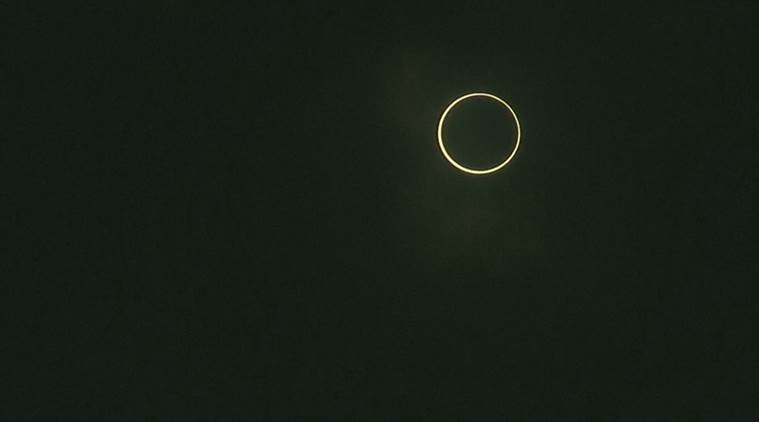 Image of annular solar eclipse of December 2019. (Image: ANI)
Image of annular solar eclipse of December 2019. (Image: ANI)
The first solar eclipse of the year 2020 will occur this month on June 21. The event will be an annular solar eclipse where the Moon will cover the Sun from the centre leaving the outer rim visible, thus creating a ring of fire.
The June 21 solar eclipse will be visible in India as well as much of Asia, Africa, the Pacific, and the Indian Ocean. Parts of Europe and Australia will also witness the June 21 event.
Solar Eclipse timing
According to timeanddate.com, the annular solar eclipse of June 2020 will start at 9:15 am on June 21 as per Indian Standard Timing (IST). The full eclipse will start from 10:17 am with the maximum eclipse occurring at 12:10 pm. The full eclipse will be visible until 2:02 pm. By 3:04 pm, the eclipse will end.
How solar eclipse happens
Whenever the Sun, the Earth, and the Moon form a straight line, we witness either a solar eclipse or a lunar eclipse depending on the position of the three bodies relative to each other. When the Moon moves between Earth and the Sun, it casts a shadow on the Earth blocking the rays of Sun from directly reaching the planet.
Based on the alignment and the relative distance between the three celestial bodies, there are three kinds of solar eclipses — total, partial, and annular. As already mentioned, the June 21 event will be an annular solar eclipse.
How annular solar eclipse occurs
When the Moon is near its farthest point from the Earth, called apogee, its relative size fails to completely block the Sun and leaves the outer rims visible. It creates a ring of fire in the sky.
If you are planning to see the annular solar eclipse, do not forget to carry proper eye protection like eclipse glasses. You can also project the image of the sun and the eclipse using a pinhole projector to see it without fear of damaging your eyes.
Express Tech is now on Telegram. Click here to join our channel (@expresstechnology) and stay updated with the latest tech news
Notably, the second and final solar eclipse of the year 2020 will occur on December 14. It will be visible directly from South America, Pacific, Atlantic, parts of Indian Ocean, Antarctica, and Africa.